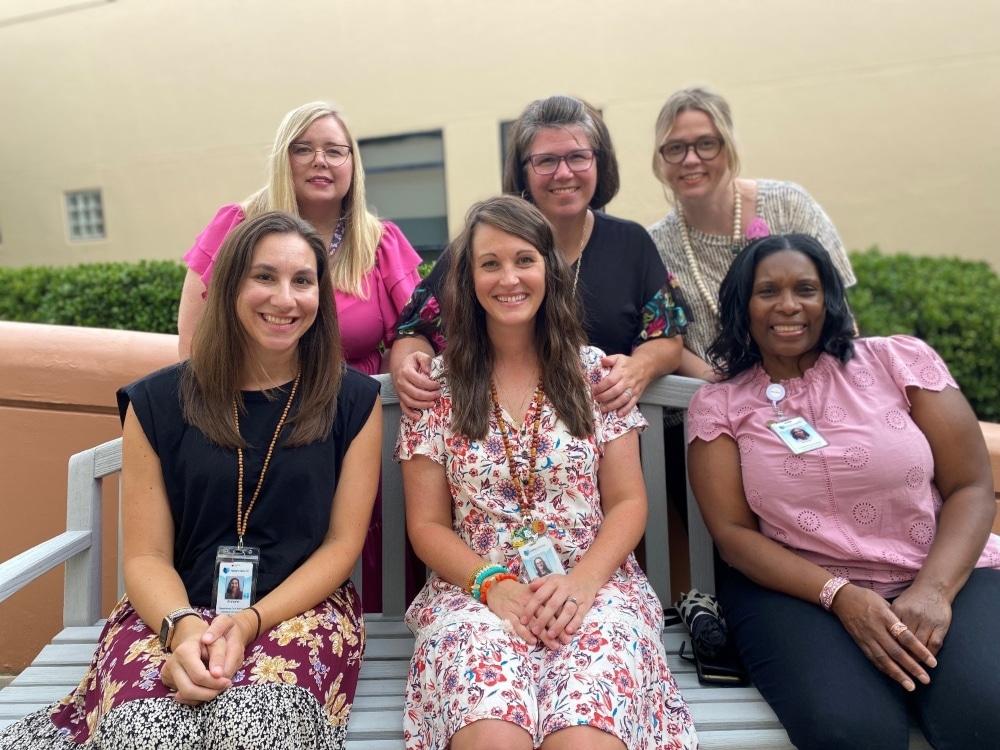Asthma is a chronic lung disease that causes inflammation and swelling of the airways, and it affects an estimated five million children in the United States. The annual economic cost of asthma is more than $81.9 billion, and in children ages 5-17, asthma is the number one cause of school absenteeism and is among the top reasons for pediatric emergency department (ED) visits and hospital admissions.
World Asthma Day, which is May 7, seeks to raise awareness about asthma and improve the lives of all people with asthma. The ECU Health Regional Pediatric Asthma Program has similar goals, including to reduce ED and inpatient admissions for children with asthma, decrease school absenteeism and to increase the quality of life for asthmatic children in eastern North Carolina. It does this by offering asthma testing, asthma education, tools to manage asthma, access to community resources and medication assistance. Their work with eastern North Carolina public schools has been a particularly effective way to reach children in rural North Carolina communities.

The ECU Health Regional Pediatric Asthma Program, first begun in 1995, initially served Pitt and Greene counties. The pilot program was a partnership between the ECU Health Maynard Children’s Hospital, Community Health programs and a local elementary school. In 1996, the hospital was awarded a three-year grant from the Duke Endowment to further support the development of a comprehensive pediatric asthma program model that focused on children in grades K–5. As a result, they saw a 40% decrease in ED visits by school-aged children, a 50% decrease in student absences and a 50% decrease in inpatient cost of care for school-aged asthmatic children.
The program has since expanded to serve 29 counties in eastern North Carolina, and the number of public schools served has increased to 16.
“Our legal team and the school boards establish contracts with the elementary schools that renew on a rolling basis, and these allow us to do asthma testing, communicate with parents, liaise with the children’s PCPs, help the kids access medication and ensure they are compliant,” said Bailey Edwards, respiratory care manager of the Pediatric Asthma Program. A respiratory therapist who has worked at ECU Health for nine years, Edwards joined the team after working bedside in the NICU and PICU. “I saw so many kids with asthma come through our hospital with severe symptoms.”
In addition to Edwards, the team is comprised of a medical director, a social worker, nurses and three additional RTs. Edwards and the team have worked hard to grow and improve the Pediatric Asthma Program’s scope. Once a child is referred by the school nurse, an asthma care manager contacts the parents for the consent to treat.
“I call the parents and introduce myself, tell them about the program and learn more about their child,” Edwards said. Then, Edwards goes to that child’s school and performs a fractional exhaled nitric oxide (FeNO) test with the child, which determines how much lung inflammation is present and how well inhaled steroids suppress that inflammation.
“Some of these kids have outrageously high FeNOs but didn’t know it – they didn’t realize they couldn’t breathe,” Edwards said. “I call their doctor after my assessment and let them know my findings and recommendations. Then we figure out how to get the child what they need.”
Medications are a key part of the child’s treatment, but often their families cannot afford them.
“We provide medications for free or at low cost through a Children’s Miracle Network Hospitals grant. These medications can keep kids out of the hospital,” Edwards said.
The asthma team also provides education to the children and their parents about how to use the medications properly and potential causes of asthma exacerbations, such as tobacco smoke, dust, weather change or exercise. Once a treatment plan has been established, the asthma team follows up regularly for several months to ensure the child is compliant and the plan is effective.
“A month after initial treatment, I often hear parents say, ‘My kid is my kid again,’ and the child is laughing and playing because they can breathe,” Edwards said.
The program’s reach into public schools continues to grow; nine more schools have pending contracts.
“Our outreach to schools is based on what we see in the emergency departments and hospitals,” Edwards said. “Once we identify these problem areas, we connect with primary care physicians and school nurses to establish relationships.”
Many of those connections are made through lunch and learns the team hosts at regional schools.
“We bring treats and give an hour presentation about our services, update the school nurses on asthma guidelines and tell them how they can refer to us,” she said. Doing this has allowed the program to get many more referrals. “What started as a trickle has now turned into a waterfall.”
Going through the schools, said Sue Anne Pilgreen, manager for the Pediatric Asthma and Eastern Carolina Injury Prevention Programs (ECIPP), is the best way to connect with children in rural areas.
“It is impossible for us to physically be in every county, but our regional partnerships with school nurses and primary care providers gives us a direct pipeline to these children, and they know we are only a phone call or school visit away,” Pilgreen said. “We take a holistic approach in caring for our patients and their families, and sometimes that means helping them find better housing, reliable transportation or mental health resources. Looking at a family’s social determinants of health and helping to fill some of those gaps is a critical piece of caring for children in eastern North Carolina.”

This program aims to overcome the disparity in health care options for many of the children they treat.
“You see families with no food, no electricity and no ability to afford medicine,” Edwards said. “The parents don’t want to take their kids out of school to see the doctor because that child has already missed so much school because of their asthma, and they can’t afford to take the time off work themselves. This program strives to eliminate those barriers.”
While the public school outreach is a major part of the program, it’s not the only way they are treating asthmatic children in rural North Carolina.
“We work with Dr. William Wooten, our medical director, in having monthly pulmonary clinics that provide specialty level care in places that don’t have those resources,” Edwards said. “It started in Jacksonville and moved to Richlands. Now we have three clinics — Richlands Pulmonary Clinic, ECU Tarboro and ECU Edenton — and more locations requesting clinics of their own.”
Like the school outreach, these clinics reduce the burden for families who cannot travel farther away.
“We’re cutting into that lack of transportation or gas money,” Edwards said. “And in places that don’t have clinics, we are gaining more school contracts.”
Looking forward, Edwards said the next goal is to increase their scope of research and apply for more grant money.
“We applied for a Vision Grant, which we should hear about this summer, and we are exploring research options, especially ones that demonstrate the program’s efficacy,” Edwards said.
These efforts will support the program’s continued growth and help them meet new opportunities to better serve eastern North Carolina.
That’s important, Edwards said, because since 2021, they’ve seen a 378% increase in the number of referrals and a 312% increase in the number of cases managed. This program, she emphasized, is unique in that it helps children and their families understand asthma so they can control it and have a high quality of life.
“There’s no program in North Carolina like us, and a lot of people reach out to us about what we’re doing,” Edwards said.
The program is always looking for more effective and efficient ways to reach families, because children with asthma are often invisible to those not looking for specific symptoms.
“You see a kid at school who doesn’t speak above a whisper or doesn’t speak in complete sentences. They don’t run around and play. They look fine, but to someone who is trained, you can tell their asthma isn’t well controlled,” Edwards said. “Asthma can go dormant and then come back; it can silence you. But this program can set you up for the rest of your life.”